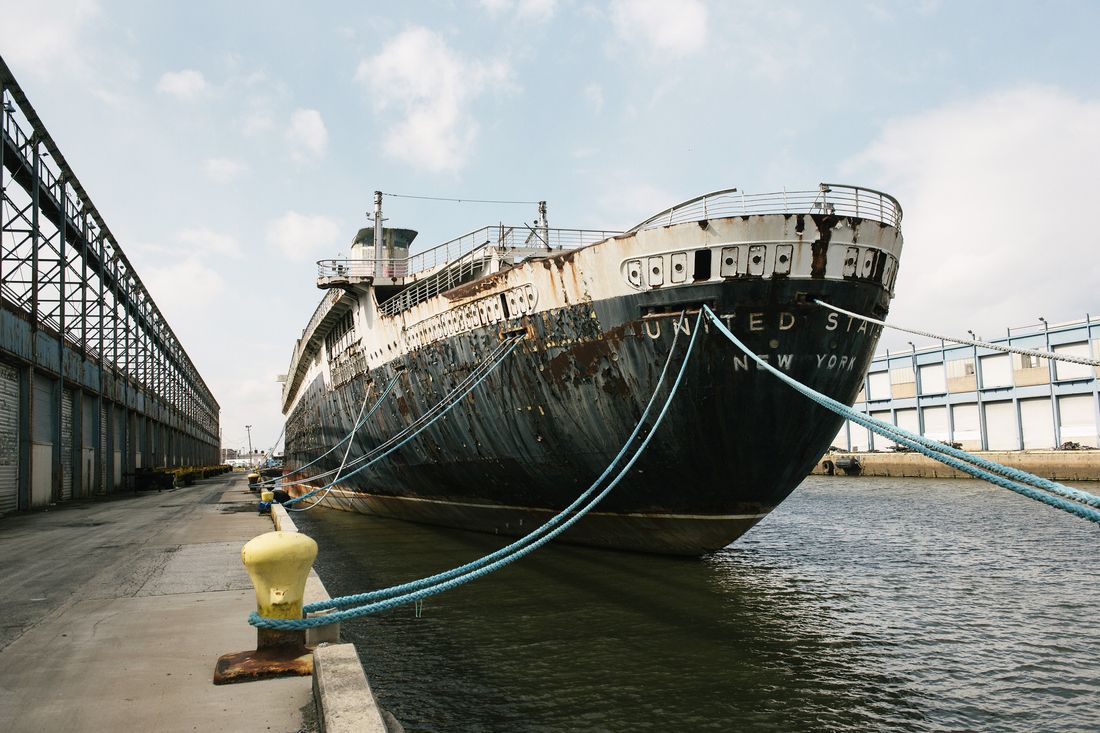
It is said that ships are the largest things that move, and ocean liners are among the hugest of the huge. Even among them, though, the S.S. United States stands out. It’s the biggest passenger ship ever built in America, just shy of 1,000 feet long. Commissioned in 1952 and retired in 1969, it has spent several decades shuttling from owner to owner, each successive one having grabbed onto the dream of bringing it back to life. Most recently, it’s spent two and a half decades moored in Philadelphia, lately in the care of a foundation that’s been trying hard to find someone to restore and find a use for it. Every few years, a new plan is (literally) floated, then falls through. The most promising was an almost-consummated deal with Crystal Cruises to turn it back into a working liner, announced in 2016 and then abandoned owing to its technical infeasibility. Two months ago, RXR Realty became the latest to lay out a promising scheme, intending to moor it in New York and turn it into a very cool hotel, docked at Pier 76 by the Javits Center. This week, The Real Deal reported that this plan, too, was on the rocks, mostly because the Hochul administration says the pier there is too small. Meanwhile, the ship faces eviction from the pier in Philly amid a rent dispute.
Restoring the S.S. United States would be a fabulous thing. It was, in its day, a gorgeous piece of engineering, and if you walk up to it in Philadelphia these days, even the rust streaks and peeling paint and general sense of desolation around it do not quite obscure what a majestic object it is. It’s a triumph of the American building arts — as much so as the Empire State Building or the Brooklyn Bridge — and it deserves preservation, as any great skyscraper would. (It is, in fact, approximately the size of the Chrysler Building.) It was America’s biggest and most powerful entry into the transatlantic superliner race, built as a combination of shipbuilding know-how, Cold War government subsidies, and gonzo national pride pushed the nation to compete with the British and the French, who all but owned the high-speed transatlantic trade.
Unlike its Art Deco predecessors, finished in wood and bronze, the S.S. U.S. was mid-century modern, its upper works all aluminum, intended to look to the future and also be completely fire-resistant. (The French Line’s Normandie had burned and sunk at its pier a decade earlier, and the United States’s designer, William Francis Gibbs, took the lesson to heart.) This, mind you, was not a cruise ship meant to loaf around the Caribbean. It was built for speed, and it was fast. How fast exactly was kept a secret for many years — those government subsidies included some naval technology — but it was rumored to be capable of 42 knots, or 48 miles an hour, outrunning its competitors by 30 percent or so. (Consider for a moment what kind of power it takes to move a ship of 47,000 gross tons at that speed. The engines produced 240,000 horsepower.) Nothing so big has ever moved so swiftly. It knocked 12 hours off the four-day crossing.
And then came the jet age — six hours to London instead of three and a half days — and the luxury-liner business evaporated. After its 1969 retirement, it spent 15 years mothballed in Virginia and then was sold off to the first of those potential saviors. It’s been in a darkening twilight ever since. Every few years lately, the ship has had a near-death experience in which it seemed destined to be cut up for scrap. About the only promising thing that happened in this period (aside from the establishment of the foundation that’s been keeping it from the scrappers all these years) was that one of those owners stripped the interiors to get all the asbestos out. That means it’s lost its design pizzazz, but it also means there’s a blank canvas there for redevelopment, and an expensive cleanup has already been dealt with.
All that said, saving a ship is not quite like saving a building. A ship, after all, is not a building but a building-size piece of machinery. Big machines are built with the expectation that they’ll see a lot of mechanical upkeep, particularly as they age, extra-particularly if they’re sitting in corrosive salt water. That is one major reason the shipping lines don’t run them as ocean liners indefinitely: They get tougher to keep up. Well-maintained oceangoing ships typically operate for 40 years or so before the rust gets too deep and they’re off to the sunset. Even if the turbines aren’t running and don’t need repair, the pipes and wires in the walls get older every year, and they’re no less likely to crack or fail just because they’re not crossing the ocean anymore. The United States hasn’t had a coat of fresh paint since the 1960s, and it looks awful. The stripped public rooms will need to be reimagined and constructed nearly from scratch. It will presumably have to be dry-docked for work below the waterline, and there are only so many workshops where you can park a 990-foot-long ship. At least the hull is sound — a test a few years ago said it retained 94 percent of its strength, possibly owing to its mil-spec build. However this project goes, it’s going to be expensive.
Then there is the question of where to put it. In many of the plans floated over the years, the S.S. United States was to be permanently moored on the West Side of Manhattan, near the United States Lines piers where it once departed for Southampton (the British port, that is, not the East End beach town). Some years ago, I was talking to Madelyn Wils, who was then running the Hudson River Park Trust, and asked about its prospects; she said basically that it would need a viable plan — reasonably enough, she didn’t want a thousand-foot carcass dumped on the park. At the time, she somewhat opaquely added that if it worked out, “I know where it would go,” but she wouldn’t elaborate.
This project is not the first of its kind, because a surprising number of people absolutely love the biggest ocean liners and hate to see them cut up and turned into tin cans. Since the Depression, there have been just seven of these 1,000-foot (give or take) ships built to cross the Atlantic: two French, four British, one American. Two of them died in service, so to speak, and one is still running. The Normandie (built 1935) burned and sank in New York Harbor in 1942. The France (built 1961) was briefly retired in the 1970s, then became a Norwegian Caribbean cruise ship renamed Norway; it served successfully until early in this century, then went to be scrapped, controversially. The Cunard Line’s Queen Mary 2 (built 2004) continues to run from Southampton to New York and back a few times a year, the last ship that does so.
Of the other four, each has seen heroic attempts at re-use, and their various degrees of success and failure are instructive. The worst-case scenario is the Queen Elizabeth (launched 1940, retired 1967). It was bought by a Hong Kong magnate, C.Y. Tung, who intended it to become a floating university. (In fact, he renamed the ship Seawise University; pronounce the name and you’ll get it.) The rebuild was underway in Hong Kong Harbor in 1973 when the ship caught fire and tipped over — then sat poking out of the harbor, half sunk, for decades, becoming a rusty haunted landmark. (It figures in a James Bond movie, too.) There have been murky questions about the origin of the fire ever since. The plans for the ship resulted in nothing more than a sad watery ruin.
The best-case outcome, and one that RXR seems to be taking its cues from, is that of the Queen Elizabeth 2, Launched in 1967 and retired in 2008, the QE2 — after a decade-long limbo in which it too seemed likely to go to the scrapyard — is instead leading a graceful retirement in Dubai. It became a hotel docked a couple of miles from the Palm Jumeirah, and a French hotel operator runs it for Istithmar World, a UAE investment firm. It seems — from this distance at least, and judging by the reviews — well-kept, and one suspects that the oil money that flows through Dubai will keep it that way.
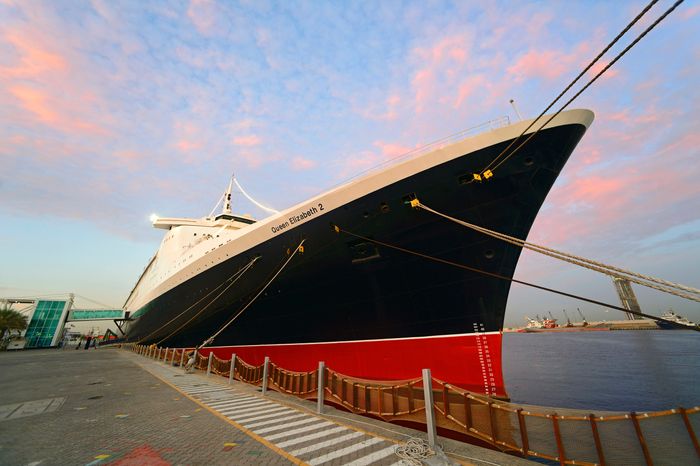
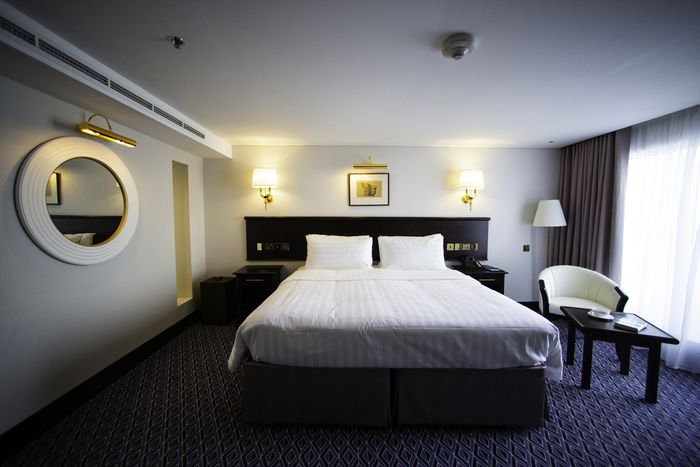
That was how the conversion of the Queen Mary — the world’s first and most prominent ocean-liner-to-hotel reuse — was supposed to go, too. The Cunard Line’s Queen Mary, the Art Deco beauty of the North Atlantic from 1936 to 1967, was sold upon its retirement to the city of Long Beach, California. Its operation was contracted out to companies that knew how to run restaurants and hotels, and ownership eventually went to a foundation. And … the whole thing lost money. A lot of money. Millions per year. It closed and reopened, and it changed contractors a few times. It continually waffled between profit and loss, often toward the latter. Despite broad local affection for it — as tourist attraction and as civic monument and school-field-trip destination — it was beginning to look like an 82,000-gross-ton white elephant. By the late 2010s it had grown seedy: splintery sun-bleached decks, visible rust streaks, and a couple of dire reports saying that the ship needed $289 million in repairs. A pipe that had been patched with duct tape burst, flooding a ballroom with sewage. The 80-year-old wooden lifeboats were rotting, and were removed lest they fall off the ship and brain someone. The vessel was in such terrible shape, one report suggested, that it could plausibly capsize. The British government leaned on the American government to fund a restoration. Instead, the city of Long Beach took the Queen Mary back over from its foundation in 2021, after putting something approaching $30 million into shoring it up. Reportedly, it’s back in the black, at least for now.
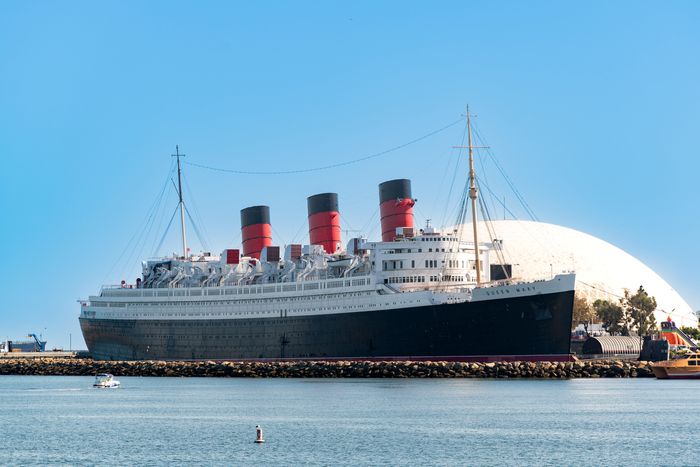
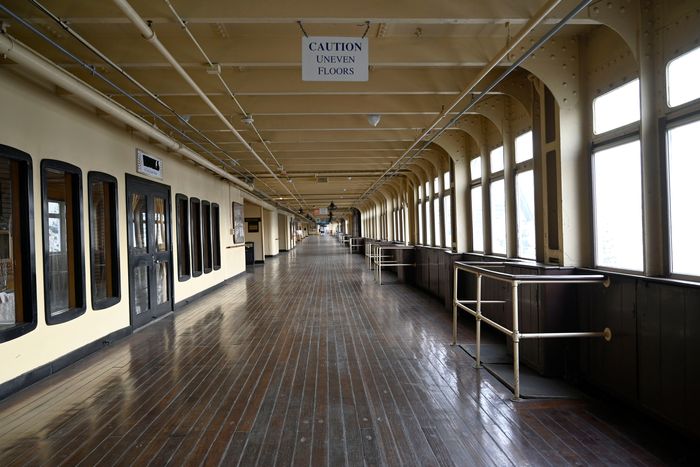
What should happen, of course, is what happens to our greatest monuments: government-funded preservation at the national level. The S.S. United States, built with Department of Defense subsidies, is a piece of cultural patrimony and military history, as much as Fort McHenry and the Gettysburg battlefield are. We preserve our naval history, too — look at the battleship New Jersey and the aircraft carrier Intrepid. The former is a museum ship moored in Camden; the latter, at the foot of West 42nd Street, was rescued by a bond-backed foundation, allowing enthusiasts to buy in, and continues to draw grants and other civic funding for maintenance and care. The United States should not be recycled into tenpenny common nails. It ought to be treasured by the nation whose name it bears on its bow and stern.




